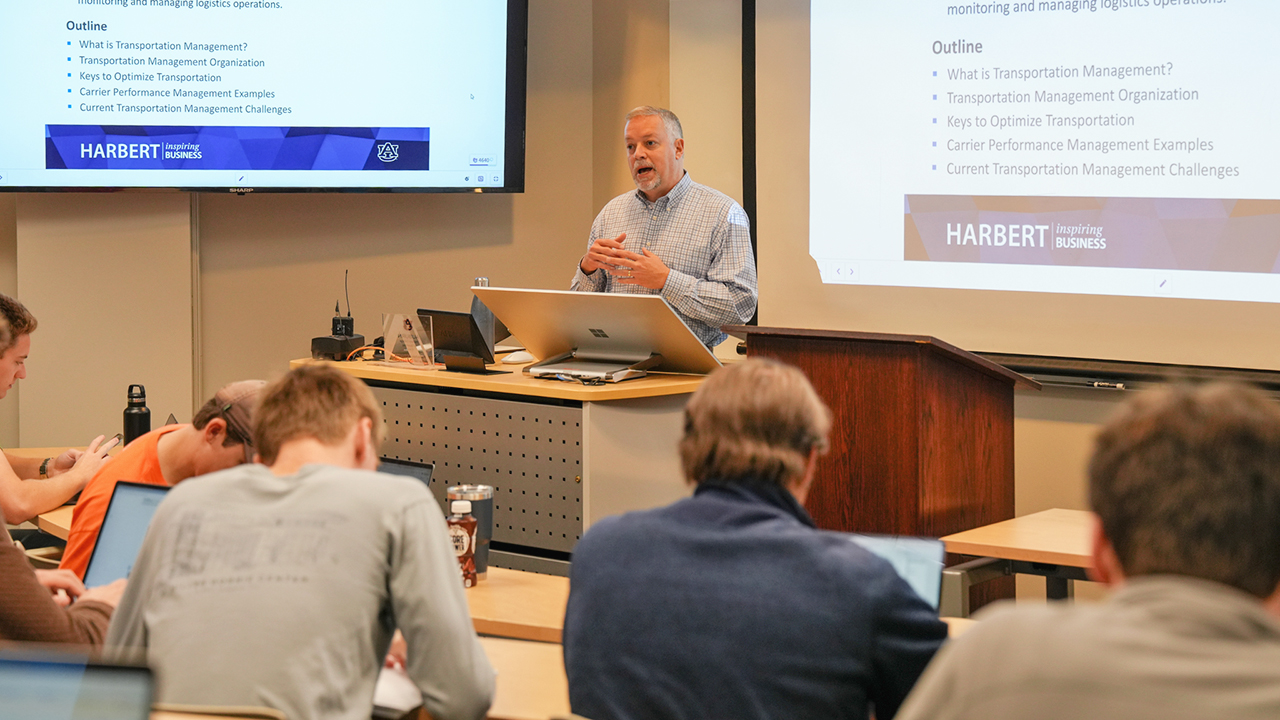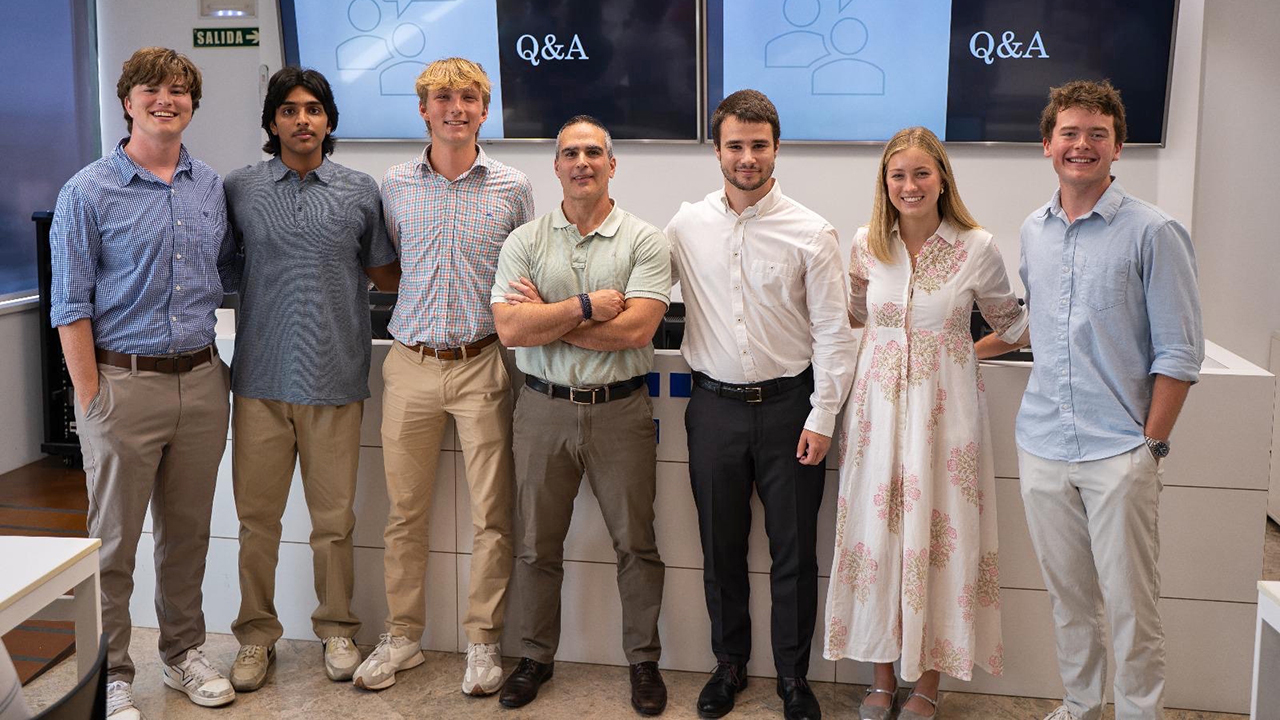 |
Adobe Stock Library image
|
Advances in artificial intelligence put subject matter expertise at the forefront
of driving supply chain efficiency and performance.
The explosion of artificial intelligence in the supply chain management (SCM) industry
raises the question of the evolving role that humans will play in optimizing the performance
of critical supply chain initiatives. With AI usurping fundamental data acquisition,
digitalization and integration processes previously performed manually, some in the
SCM community fear a diminished role for human decision-making.
A team of researchers from Auburn University and partner IBM say otherwise.
In a new study published in Supply Chain Xchange, formerly Supply Chain Quarterly, these experts explain how business-specific subject matter expertise will emerge
as an even more – not less – critical element of building and managing increasingly
efficient, high-performance supply chains.
Auburn’s Harbert College of Business interviewed Tony Roath, assistant professor in the Department of Supply Chain Management, to review the key takeaways from the academic research paper co-authored by Harbert’s
Glenn Richey, Tyler Morgan, Ian Slazinik and IBM’s Steven Hurley.
| Harbert: |
Your paper lays out the three stages of the current digital transformation of the
SCM industry, with a focus on the future state of incorporating intelligent workflows.
What are those three stages?
|
| Tony Roath: |
We recently conducted a focus group with 15 industry partners and interviewed an additional
six individuals who are actively involved in supply chain digital transformation efforts.
Our investigation focused on how these organizations deploy and utilize technology
– including AI – to achieve their transformation goals and how they are integrating
both technology and human resources to address supply chain challenges. One thing
we found was that the adoption of digital technology in SCM follows three phases:
digitization, digitalization and digital transformation.
Digitization, sometimes called digital encapsulation, is converting existing data and documents
into a digital format to accurately represent the physical world. In this stage, data
is not altered nor analyzed, it is merely encoded.
Digitalization, on the other hand, entails altering processes, organizational structures and decision-making
architectures to begin moving towards integrating processes across the supply chain.
Finally, digital transformation fundamentally changes the process to fully leverage these new digital technologies
within and across key companies and entities, ultimately affecting how an organization
creates value across its supply network.
|
| Harbert: |
With so many players having to buy into the value of these three stages and take the
initial steps required to embark upon this digital transformation, where does the
industry stand in working through these demands?
|
| Tony Roath: |
One of the challenges we face as an industry is how to ensure that all participants in a given supply chain
are sufficiently prepared technology-wise to contribute to and help realize the benefits
of the digital transformation being driven by major players.
One thing we found was that the vast majority of companies involved in our study were
in the midst of a digital transformation effort but have not yet entered the final
stage. Most had already taken the first step of digitizing their data, seeing it as
essential to company survival. As one participant said: “Digitization of the supply
chain is a requirement for being able to be an omnichannel retailer in the future.
You’ve got to know what you have. You’ve got to know where it is with a high degree
of accuracy. Or you’re dead.”
Many of our participating companies have also moved into the digitalization phase,
using digital technologies to augment business processes but not fundamentally transforming them – i.e., providing their
human managers with dashboards, inventory trackers, alerting systems, and even robotic
process automation bots to improve the efficiency and effectiveness of their processes.
Human managers, however, are still central to the execution of the process.
|
| Harbert: |
What do these companies need to do to move beyond the adoption of digital technology into what you call the “digital transformation” phase?
|
| Tony Roath: |
That’s where intelligent workflows come in – AI can only do so much. There are still
cases in which AI models’ predictions are not correct and humans are needed to detect
when the conditions under which the model was trained have changed. While AI will
only get better, it will never be able to do everything.
An analogy might be helpful here. I was in the Air Force, and we used a lot of AI
even back then. I flew a lot, and we’d have these big Airborne Warning and Control
System planes (AWACS) in the sky letting us know in real time what was going on. We
would get a briefing before we took off, but once we got into the air, we were updated
on the contingencies of the moment and would act upon that real-time data as it came
in. When we came back from our mission, we would debrief our experiences and all that
new data would go back into the system for the next time we flew.
It became an iterative process whereby the system would propose a set of actions and
counteractions based, in part, on how well previous recommendations worked out or
didn’t, offering a more robust set of options to consider going forward. That’s how
intelligent workflows operate in supply chain management.
|
| Harbert: |
This seems to point to a more strategic role for humans in optimizing the performance
of supply chains based on a constantly expanding and increasingly detailed set of
data and decision points, not a lesser one, right?
|
| Tony Roath: |
Exactly. The orchestration of intelligence – “artificial” and human – is what intelligent
workflows are all about. An intelligent workflow implementation plan would provide
parameters for the integration of all interactions among digital workers, human workers,
AI and other IT systems necessary to complete an efficient, high-performance end-to-end
business process.
In this scenario, Robotic Process Automation (RPA) uses software bots to automate
repetitive tasks, freeing up human time for more complex work while AI handles many
cognitive tasks such as first-level decision-making, natural language interaction
and content capture. Finally, human experts support the overall intelligent workflow
through ongoing quality assurance – handling cases that automation and AI cannot manage
and investigating/resolving issues where digital technologies have been unsuccessful.
Human experts would also provide feedback into the intelligent work to improve process
automation and AI processes for retraining and continual improvement of the intelligent
workflow.
In this sense, the human worker becomes a supporting actor concerning the workflow
itself. Though their skills are crucial to the ongoing success and improvement of
the workflow, humans are not directly responsible for working through the end-to-end business process. That responsibility
is assumed by the workflow orchestration service, the intelligent workflow.
|
| Harbert: |
What does that leave for humans to do in adding value to supply chains in an intelligent
workflow environment?
|
| Tony Roath: |
Subject matter experts and other SCM personnel add unique value to an intelligent
workflow-based supply chain in at least two key ways: overseeing risk management and
ensuring operational resilience.
The ability to respond to contingencies on the fly is a critical human function that
AI can’t do on its own – there are too many intricacies, too many contingencies, factors
being created the more you build out the network with all the accumulating data. Correcting
the AI-based intelligent workflow model when it fails and providing the feedback necessary
to make sure that same mistake isn’t made again is a crucial element of mitigating
risk across the supply chain. That’s one essentially human role.
Another is instilling and ensuring a level of system-wide resiliency across the supply
chain itself, the ability to not only address changes as they occur but also identify
and plan for those likely to come. That goes beyond merely bouncing back from a disruption,
for example, but transforming the process itself – the interaction of the technology
and the people. AI systems in and of themselves aren’t that good at predicting outcomes
– people remain better equipped for that important role, provided they are properly
trained.
That’s where we in the Department of Supply Chain Management in the Harbert College
of Business come in.
|
Tony Roath’s research focuses on understanding how supply chain networks respond to
disruptive global environments. An Air Force veteran, Roath earned his MBA and PhD
from Michigan State and worked as a management consultant in the private sector before
joining the Auburn Harbert College of Business faculty in 2015.
###
The Harbert College of Business, which is celebrating the 10th anniversary of Raymond and Kathryn Harbert's transformational naming gift, is a nationally ranked
hub of undergraduate, graduate and continuing business education that is inspiring
the next generation of business leaders. Our world-class faculty deliver unparalleled
academic rigor in the classroom, while our research-driven scholarship advances thought
leadership and best practice across business disciplines. The largest college on Auburn's
campus, Harbert enrolls more than 6,900 undergraduate, graduate and doctoral students.

 Degrees & Programs
Degrees & Programs
 Faculty & Staff
Faculty & Staff
 Career Development
Career Development
 Recruiters & Industry
Recruiters & Industry




